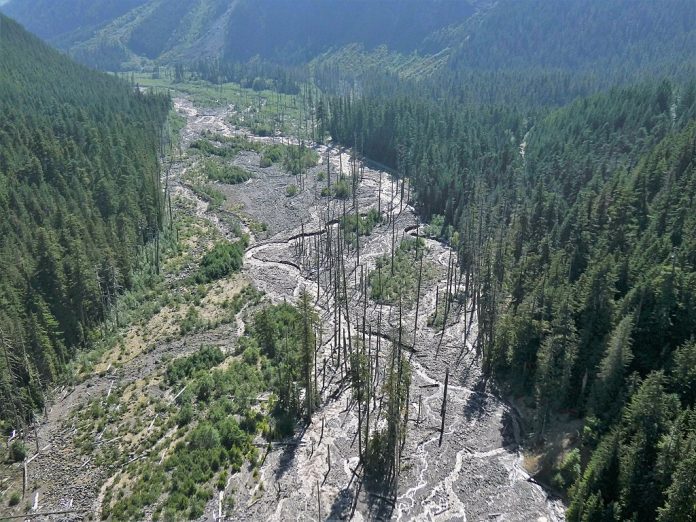By Randy Bracht
(The Center Square) – The Washington Department of Ecology has awarded $63 million to a dozen recipients – tribes, counties and conservation groups – to improve management of floodplains within the state’s major river basins.
“We are working with partners across the state to improve the resiliency of Washington’s floodplains so that we can protect community health, safety, and the environment,” Ecology director Laura Watson said in a news release Friday.
“Floodplains are essential. They provide important habitat for salmon, rich soil for farms, and remarkable opportunities for recreation and enjoying nature,” she said.
Ecology, along with the Bonneville Environmental Foundation and The Nature Conservancy, lead the state’s Floodplains by Design program, a public-private partnership that is also supported by American Rivers, a tribal liaison, and other contractors.
Floodplains are lands adjacent to a river within a surrounding valley. They are considered critical for fish and wildlife and are home to most of Washington’s salmon spawning and rearing habitat, according to Ecology. Such lands often experience flooding during heavy rains, storms, and rapid snowmelt which can jeopardize manmade facilities. But the same forces can disperse nutrients that make soil fertile for agriculture.
Through a competitive grant process, funds are awarded for projects which integrate flood hazard reduction, ecological preservation and restoration, and habitat improvements for salmon and other native fish. Funding can also support agriculture preservation, water quality improvements and recreational opportunities.
The Floodplains by Design program was launched in 2013. Since then, the Washington Legislature has provided $283 million to support 57 floodplain projects in 18 counties. Through 2022, Ecology said such projects have reconnected 7,925 acres of wetlands and riparian forests to rivers in Washington, permanently protected 5,476 acres of land, restored 71 miles of salmon habitat, and reduced flood risks to 3,084 homes and structures.
According to the agency, every dollar invested in flood mitigation saves an average of $7 in flood damage.
The state’s 2023-25 capital budget approved $67.4 million for 12 projects. Grant awards are as follows:
- Quileute Tribe, $10.1 million, restore natural processes of Quillayute River in Jefferson County to improve floodplain, salmon habitat, access to tribal and recreational fishing, reduce flood hazards and erosion;
- Whatcom County Public Works Department, $10 million, Nooksack River watershed flood hazard reduction, salmon recovery, ag/land-use needs;
- Pierce County Public Works and Utility Department, $9.9 million; multi-phase restoration/enhancement projects on eight reaches of the Pullayup River watershed;
- Snohomish County Conservation Natural Resources Department, $9.9 million, floodplain management of the Snohomish watershed with farmland enhancement;
- Stillaguamish Tribe of Indians, $8.8 million, cooperative effort in the Stillaguamish watershed for floodplain and farmland enhancements;
- Lower Columbia Estuary Partnership, $5.4 million, restore floodplain functions along three miles of East Fork of the Lewis River damaged by gravel mining and development; rebuild river channel in Skamania and Clark counties;
- Yakama Nation, $4.2 million, Methow River-Twisp Confluence in Okanogan County, acquisition of private parcels threatened by flooding within the town of Twisp, restore salmon habitat;
- Forterra NW, $3.5 million, Skagit County/Town of Hamilton, floodplain education, property acquisition, septic removal, restoration of floodway and native plants;
- Methow Salmon Recovery Foundation, $1.2 million, Sugar Channels Reconnection in Okanogan County, restore floodplain connections, improve riparian conditions, create “margin areas” for salmon along 1.5 miles of the Methow River;
- Kittitas Conservation Trust, $1 million, finish design of Hanson Ponds Floodplain Restoration Project to protect infrastructure, reduce flood hazard to landowners, create wetland habitat, enhance community recreation;
- Bonneville Environmental Foundation, $824,000, for providing technical assistance and support to implement the proposed Floodplains by Design capital projects;
- Skagit Conservation District, $237,000 to begin planning for large-scale restoration of Colony Creek/Samish Basin for flood hazard reduction, improved water quality, farm productivity, fish habitat.
To read more about flood management, click here.


























